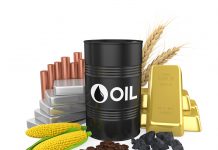 Despite the threat of a trade war and concerns over demand for base metals, heightened supply worries pushed aluminium prices to a three month high.
Despite the threat of a trade war and concerns over demand for base metals, heightened supply worries pushed aluminium prices to a three month high.
In the most active MCX futures, prices outperformed other metals, gaining more than 20 percent from the recent low it hit in July.
Supply disruptions
An outage at global aluminium giants like Norsk Hydro’s plant in Brazil, Russia’s Rusal, and a labour strike in Alcoa’s alumina refineries in Australia led to a supply tightness which hit the global alumina market.
Norwegian metal company, Norsk Hydro, temporarily stopped all operations at its alumina refinery in Brazil due to environmental issues. The company has been operating at half capacity since March due to a dispute with Brazilian authorities.
Alumina is the key ingredient in the production of aluminium. Closing operations of the world’s top alumina refinery and possible shortage in the supply of raw material led to a rise in prices. As per forecast, the company would take almost a year to return to normal production.
Earlier, a sharp surge in prices was seen in March due to US sanctions on Russian aluminium major Rusal, the world’s second-largest aluminium producer, and concerns over a global trade war.
Rusal contributes 6 percent of world’s aluminium output and operates mines and smelters across the world. Two-third of Rusal’s production are outside Russia making the company an integral part of the global supply chain.
Workers at Alcoa, Western Australian aluminium producer, are on strike since August 8 demanding job security and a new wage agreement. The strike had earlier added supply pressure on bauxite and alumina.
China impact
Reports of potentially fewer mine closures in China this year may lower the threat of declining global inventories. China has been fighting air pollution by regulating operations of heavy industries and replacing coal-fired systems with gas or electrical systems.
Based on China’s winter anti-pollution campaign, the country had earlier planned a 30-50 percent production cut on heavy industries, which was expected to hit the global metal industry.
However, the country discarded the plan to curb output and gave permission to local authorities to adopt output curbs based on regional emission levels.
LME stocks
Inventories, which are not earmarked for delivery on the London Metal Exchange, is now placed at its lowest level in a decade, signalling possible supply crunch.
Inventories at LME certified warehouses declined below 1 million marks recently, the lowest level since March 2008.
It has tumbled more than 80 percent since it peak in February 2014. At the same time, stock levels at Chinese warehouses are still near record highs.
Looking ahead, high stock levels at top consumer China is likely to outstrip the prevailing global supply shortage.
Concerns over how trade war worries would hit demand for metals, rising US interest rates, strengthening dollar and slowdown in China are likely to weigh market sentiment.
Domestic prices are likely to trade between Rs 136/kg to Rs 170/ kg with a positive bias. A weak local currency perhaps gives further thrust to domestic prices.
First appeared in Moneycontrol
Posted: October 2018








